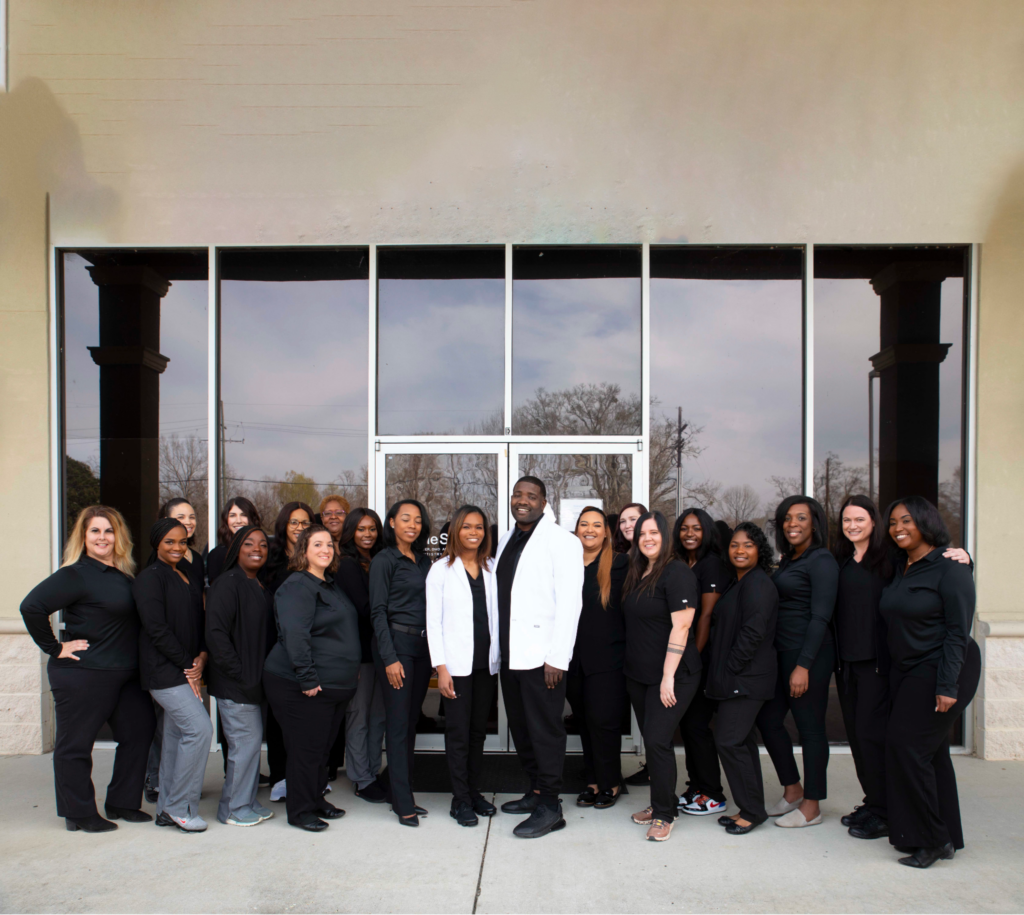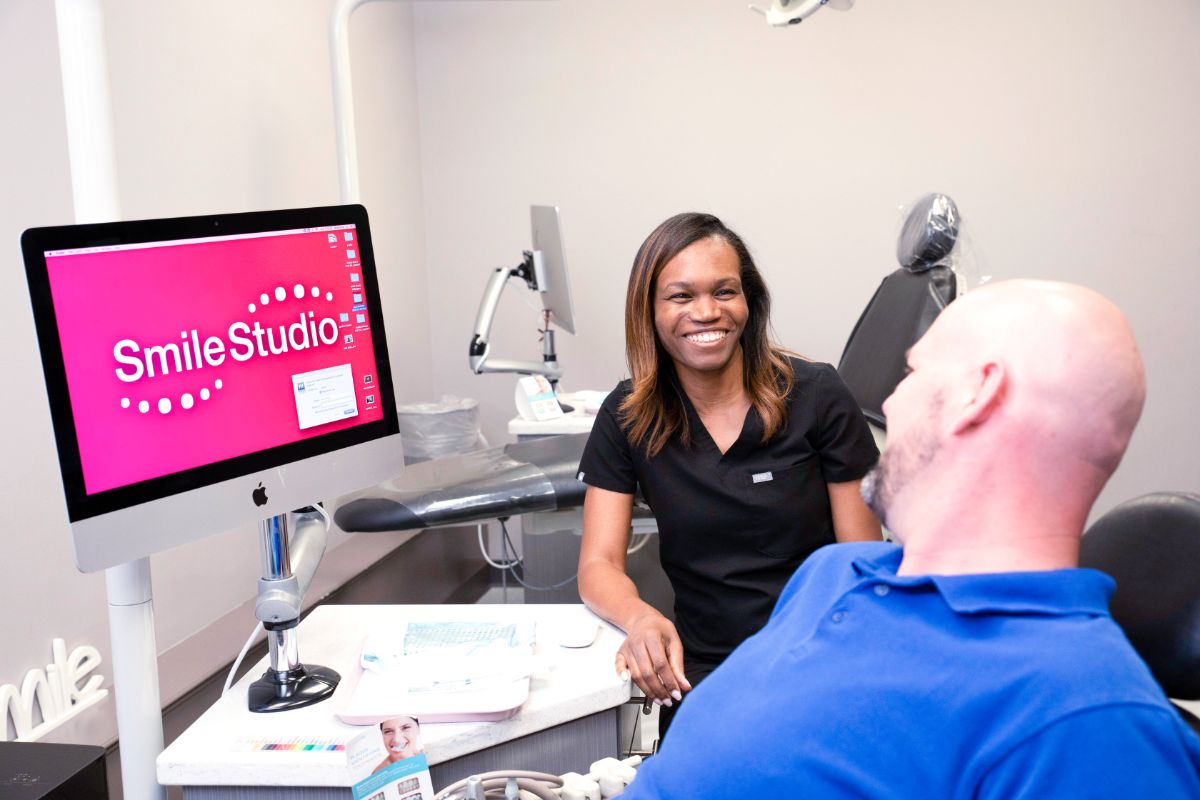Here at Smile Studio of Zachary, we want our patients to know they can always come to us with any questions. And yes, that means you too! We get it; there are a ton of questions to ask! Orthodontics can be somewhat complicated, and we deal with it every day!
Luckily, Dr. White is a board-certified diplomate in orthodontics from the American Board of Orthodontics. That’s true of only one in three orthodontists nationwide! So when we say she really knows her stuff, you can take it to the bank.
Today we’ve asked her to discuss some of the most frequently asked questions we get here at Smile Studio. Questions like: what’s the difference between a dentist and an orthodontist, or do I really need braces?
We’ll answer those and a whole lot more, so keep reading!
What’s the difference between a dentist and an orthodontist? Can my dentist treat my orthodontic issues?
All orthodontists are dentists first. It’s necessary to get into an orthodontic program to complete a full educational program in general dentistry first. However, after that, orthodontists like Dr. White go on to complete several more years of additional, highly specialized training to learn all about structure and care of the teeth and jaw, specifically as it relates to alignment.
While a general dentist may technically be capable of providing treatment, it’s essential to understand that orthodontists have undergone years of specialized training on top of dental school. Orthodontic programs are highly competitive, and the American Association of Orthodontists reports that only 1 in every 15 applicants is accepted.
While your dentist has a good understanding of your general oral health, orthodontists like Dr. White have studied the growth and maturation of the teeth and jaw. They’ve developed refined diagnostic skills to predict issues associated with treatment and the most appropriate course of corrective care and have undergone extensive training in the development of facial features in childhood and adolescence.
Don’t you want to leave your specialized care needs to a specialist?
What’s an overbite? How’s that treated?
In the case of an overbite, the upper front teeth overlap or cover part of the lower front teeth. This can lead to excessive wear and tear of the front teeth, primarily the incisors (the two front teeth). Another concern with an overbite is the possibility of damage to the gum tissue leading to excessive gingival display or a gummy smile to the rest of us.
Most often, traditional or clear braces or even aligners such as Invisalign can correct the issues leading to an overbite.
And what about an underbite?
Also known as an anterior crossbite, this is where the lower jaw sits out in front of the upper jaw. When uncorrected, underbites can lead to excessive stress and pressure on the joints of the maxillofacial region. That means tension headaches, tooth grinding, and temporomandibular disorders, or TMJ.
Underbites typically require more aggressive treatment than would be the case for the more common mild overbites. In more serious cases of underbite, Dr. White may refer you to an oral or maxillofacial surgeon with whom she’ll work closely to reshape the jaw to develop a proper bite.

What’re a few other bite problems? How do you fix them?
Following is a list of other common bite issues:
- Crowding – One of the most common orthodontic issues, crowding can cause self-esteem issues due to a lack of confidence in your smile, but there are more functional concerns. Crowding can lead to difficulty maintaining proper dental hygiene. This can cause an increase in cavities and gum disease, such as gingivitis.
- Spacing – The opposite of crowding, in spacing, as the name suggests, there is just too much space between teeth. All that extra space is ideal for the formation of harmful plaque and bacteria, so just like crowding, this can lead to issues of gum disease and other oral hazards that go along with difficulties maintaining proper dental hygiene.
- Dental midline issues – Often due to early loss of baby teeth or missing permanents, dental midline issues result from your upper and lower incisors not aligning symmetrically. For a famous example of dental midline issues, check out early photos of the actor Tom Cruise. His dental midline issues were addressed with braces when it was time for his children to see their orthodontist, and so can you! Not only can dental midline problems lead to self-confidence issues, but also they can lead to systemic orthodontic malocclusion if left untreated.
- Crossbite – Refers to a misalignment of either the teeth, jaws or both, in which upper teeth sit inside lower teeth. This often becomes worse over time and can lead to issues with properly chewing food. The sooner this is detected, the better. That’s why it’s recommended that even if you don’t notice any visible malocclusion in your child’s teeth, you take them in to see an orthodontic specialist like Dr. White when they’re seven years old, according to the American Association of Orthodontists.
All of the following bite issues and more can and are corrected on a daily basis by skilled orthodontic experts such as Dr. White.
Do I have any alternatives to traditional metal braces?
There has never been a better time to receive orthodontic treatment. While traditional braces of today are lighter, more effective, and less conspicuous than ever, there are an increasingly growing array of alternatives to conventional braces that are often just as or even more effective.
Ask Dr. White about Invisalign, ceramic (clear) braces, or lingual braces to learn more!
Isn’t Invisalign just for mild cases?
While every smile is different, and there are cases in which traditional metal braces are more appropriate to unlock your best possible smile, Invisalign is much more flexible than many think when treating moderate to complex cases.
Invisalign has been around for over 20 years. Thousands of case studies of missing teeth, extractions, surgery, corrections of bad bites, and more have been successfully treated with Invisalign!
I’ve been told I have a gummy smile – What’s that?
A gummy smile is one of those dental issues that doesn’t have a specific definition. Since it is generally based on perception, you’ll likely know a gummy smile when you see it. Studies have even been conducted to determine what people consider excessive gingival display. In most cases, subjects rated smiles as more attractive when showing two millimeters or less of gum tissue. Any more than that, and the smile got labeled as “too gummy.”
Am I too old for orthodontic treatment?
The fact is that dental malocclusion, overbites, jaw issues such as temporomandibular joint dysfunction (TMJ) and other orthodontic issues have no expiration date.
While there may be a societal preconception of braces as being for kids, that idea is starting to change – more than 25% of all new braces patients are adults, according to the American Association of Orthodontists.

It’s Right In The Name! Start Smiling With Smile Studio
And there you have it! Those are some of our most frequently asked questions, but we’ll bet you can think of a whole lot more – that’s great! Give us a call at 225-351-0252 or just fill out this form, and we can get started on a stunning, healthy smile you’ll love!
 Schedule Now
Schedule Now
